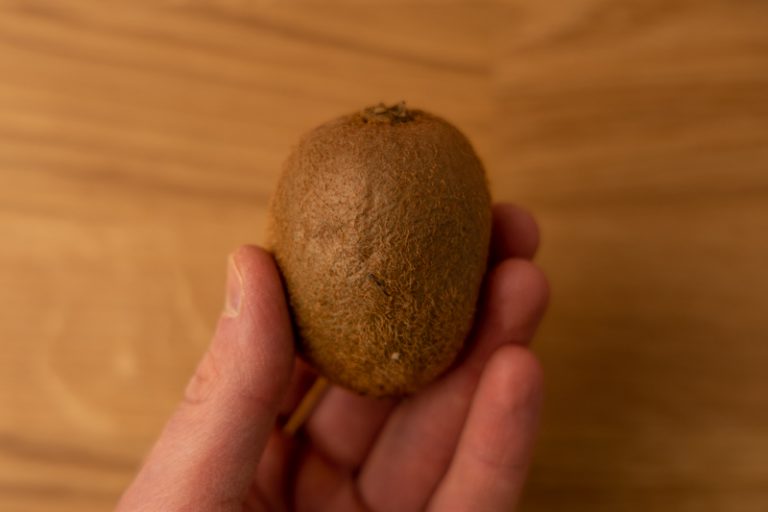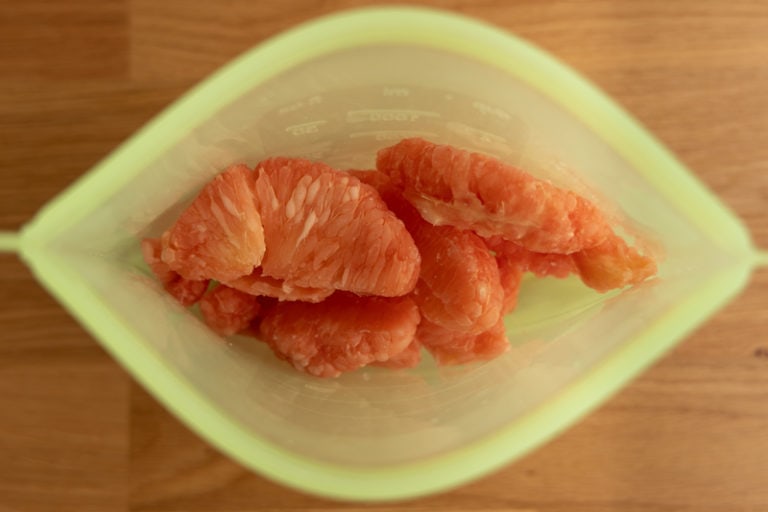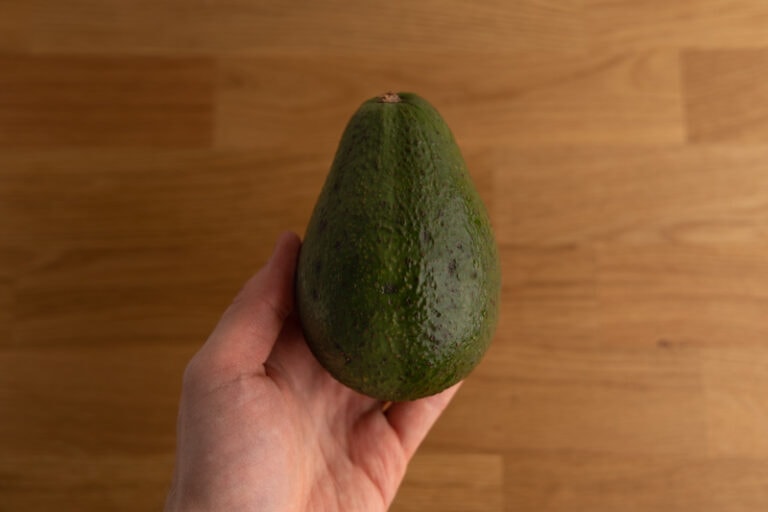How to Ripen and Store Nectarines at Home?
Here’s everything you need to know about the storage and ripening of nectarines. Learn when a nectarine is ripe and how to store and ripen nectarines at home.
Got home with a bunch of nectarines and not sure what the best way to store them is?
Or yours are quite firm, and you’re wondering when nectarines ripen and how to speed up the process.
Sounds familiar? If so, this article is for you.
Let’s start by covering how to tell if a nectarine is ripe.
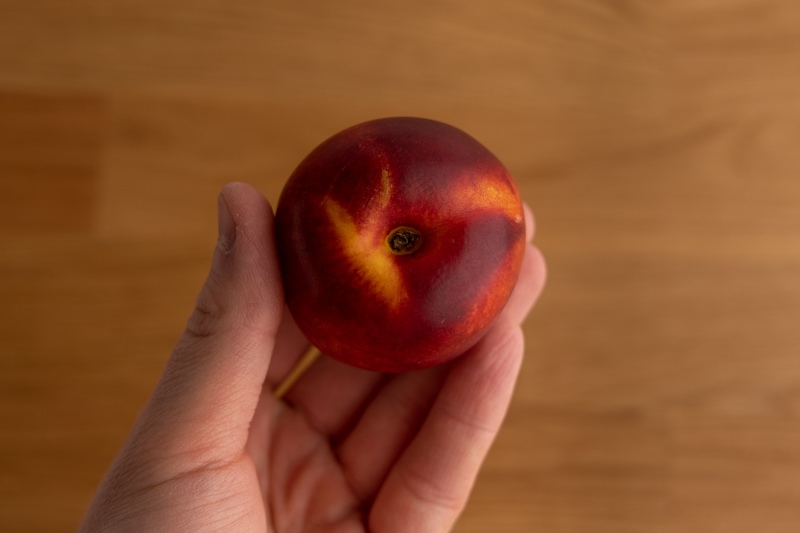
When Are Nectarines Ripe?
A ripe nectarine is relatively firm but gives slightly under gentle pressure and doesn’t have a greenish tint. If the fruit is super firm, it’s not yet ripe, and if it’s soft and almost mushy, it’s overripe and won’t last long.
When it comes to color, you’re looking for nectarines that are bright red to deep red, with some undertones of yellow and orange. The exact tints and how much skin is red versus orange or yellow depend on the variety and when the fruit was picked, so it’s best to focus on firmness.
You can eat under-ripe nectarines, but they won’t be particularly sweet and juicy. Instead, they’ll be sour-tasting and crunchy.
Nectarines ripen off the tree, and it’s best to let them ripen before eating, which is what I want to cover next.
How to Ripen Nectarines?
You ripen nectarines by storing them in a dry place at room temperature until they soften slightly.
To speed up that process, you can place the fruits in a brown bag and close it. Then, you can add a couple of ethylene-producing fruits like apples or ripening bananas to that bag for even faster results.
When ripening nectarines, give each one a check once a day and separate ripe ones from ones that are not.
Like peaches or apricots, unripe nectarines need a couple of days at room temperature on the counter until they’re ready. After 1 to 3 days, you should notice that they aren’t as firm anymore, and that’s when they’re ripe.
(Make sure the whole fruit is slightly soft, a single tender spot doesn’t mean the nectarine is ready.)
When it comes to the mechanics of ripening, it’s all about the ethylene gas concentration. The more ethylene gas around, roughly speaking, the sooner the nectarine will be ready for eating.
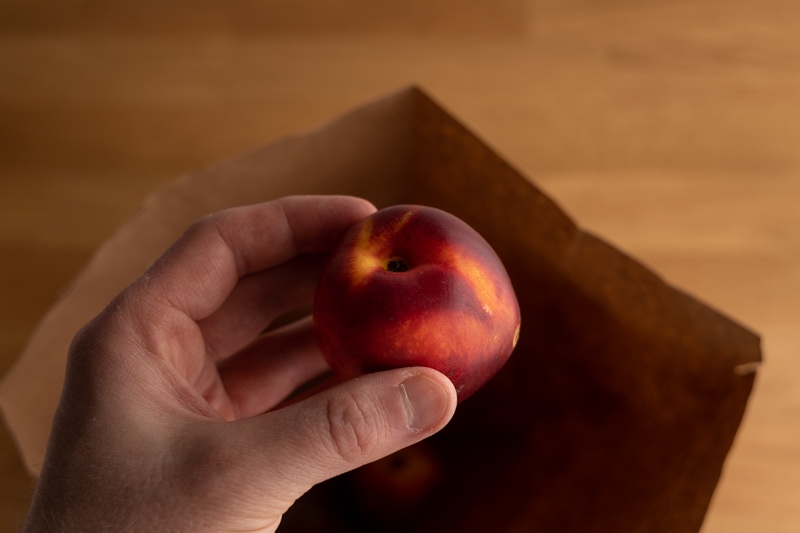
The methods of shortening ripening time are all about getting more ethylene around the fruit. So by storing the nectarines in a paper bag, you trap the ethylene they release, increasing its concentration.
Placing another ethylene-producing fruit (e.g., an apple or banana) does the same thing.
Last, don’t use plastic bags for ripening fruit. They sure trap all the ethylene inside, but they also trap all the moisture, which, as you know, causes premature spoilage, especially at room temperature.
Now that you know all about ripening, it’s time to talk about storage.
How to Store Nectarines?
Store unripe nectarines on the counter at room temperature until ripe. Once ripe, you can either leave them at room temperature for a day or two, or refrigerate them in a plastic bag or the crisper drawer for 4 to 5 days.
When storing nectarines, keep in mind the following rules:
- Wash before eating. If, for any reason, you have to wash nectarines before storage, make sure they dry thoroughly.
- Store away from smelly foods. We all keep some smelly foods in the fridge, so make sure your nectarines don’t sit nearby if they aren’t sealed in a plastic bag.
- Refrigerate only after ripe. If you don’t let your under-ripe nectarines ripen, they’ll stay sour and crunchy.
The same rules apply when storing apricots and storing peaches.
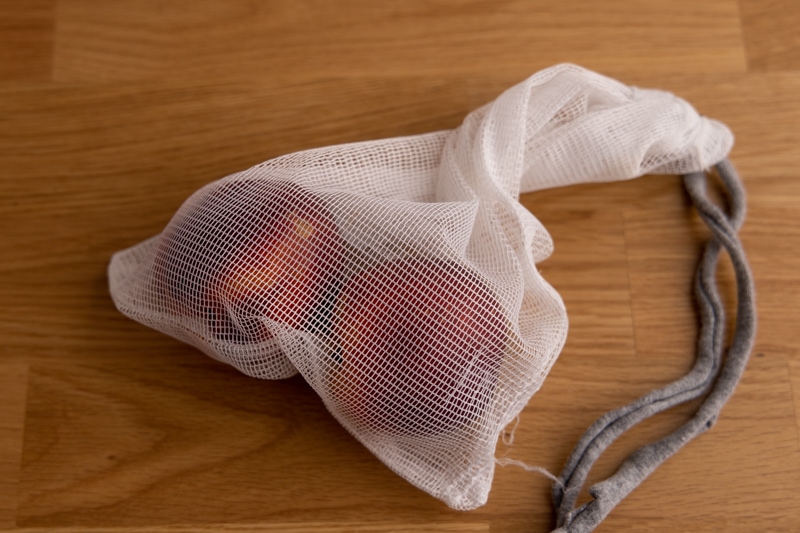
Should Nectarines Be Refrigerated?
Refrigerating nectarines isn’t a must, but it’s recommended because it extends the shelf life by a few days. Stored at room temperature, ripe nectarines keep for only 1 to 2 days before they become mushy, while in the fridge, they last for 3 to 5 days.
In other words, if you plan on eating nectarines within a day or so, and they aren’t too soft already, it’s okay to leave them on the counter.
If you store ripe nectarines on the counter, make sure they sit in a cold and dry spot away from heat sources. And place them in a ventilated bag or a fruit bowl so that they can breathe and any moisture can evaporate easily.
(And make sure the nectarines sit away from ethylene-producing fruits and veggies, of course.)
When refrigerating nectarines, place them in the crisper drawer or seal them in a plastic bag and leave them on a fridge shelf. Nectarines like humid environments, and both places keep them this way: the crisper is typically the most humid spot in the fridge, while the bag traps nectarines’ moisture.
Storing Cut Nectarines
Store cut nectarines in the fridge sealed tight in a freezer bag or an airtight container. Stored this way, they will last up to 3 to 4 days if they’re at peak ripeness and 1 to 2 days if they’re already softish and a bit overripe.
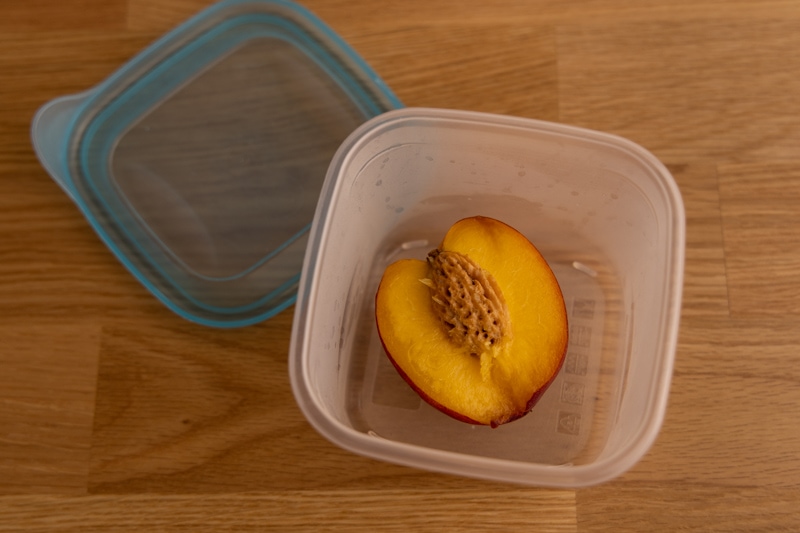
How Long Do Nectarines Last?
| Counter | Fridge | |
|---|---|---|
| Nectarines, unripe | 1 – 3 days, until ripe | |
| Nectarines, ripe | 1 – 2 days | 3 – 5 days |
| Nectarines, cut | up to 4 days |
Unripe nectarines take 1 to 3 days to ripen. Once ripe, nectarines keep in the refrigerator for 3 to 5 days and only 1 to 2 days at room temperature.
If you need more time, you can freeze nectarines or make nectarine jam.
As you might imagine, shelf life depends on your nectarines’ overall quality and ripeness.
Just-ripe ones should easily keep in the fridge for 5, maybe even 7 days, before their quality deteriorates noticeably. But if you’ve bought yours already soft, all you’ll get is 1 to 3 days.
When buying nectarines, choose ones depending on what you need at that moment:
- choose firm ones if you want them to last more than a couple of days
- grab slightly-soft nectarines if you’re looking for some to eat in the next few days
- take over-ripe soft nectarines if they’re on sale and you want something to snack on right now or make nectarine jam or baked goods on the cheap
Finally, let’s talk about spoilage signs.
How to Tell if a Nectarine Is Bad?
Throw out nectarines that:
- Are super soft, mushy, or leaking. Nectarines start off firm and soften as they ripen, but if they’re squishy and look and feel gross, they’re gone.
- Are moldy or rotten. Mold is most probable in wounded fruits, while rot is common in ones stored at room temperature for too long. If only a tiny area of the nectarine is affected, you can probably cut it out, but it’s better to err on the side of caution and toss the whole thing anyway.
- Have brown or translucent flesh. Stone fruits sometimes suffer from internal breakdown that doesn’t show any changes on the outside. So if when you open a nectarine and see that the flesh is brown or translucent, it’s gone. If only a small area is affected, you can cut it out (with some extra).
- Smell off. If your nectarines have a sour or musty aroma, and it’s not clear that one or two are spoiled, toss them all, even if there aren’t any other spoilage signs noticeable. But if they smell like a sausage that sits next to them, well, you probably didn’t seal the bag tight enough.
If you find anything else suspicious or unsual, throw out the nectarines. Better safe than sorry.
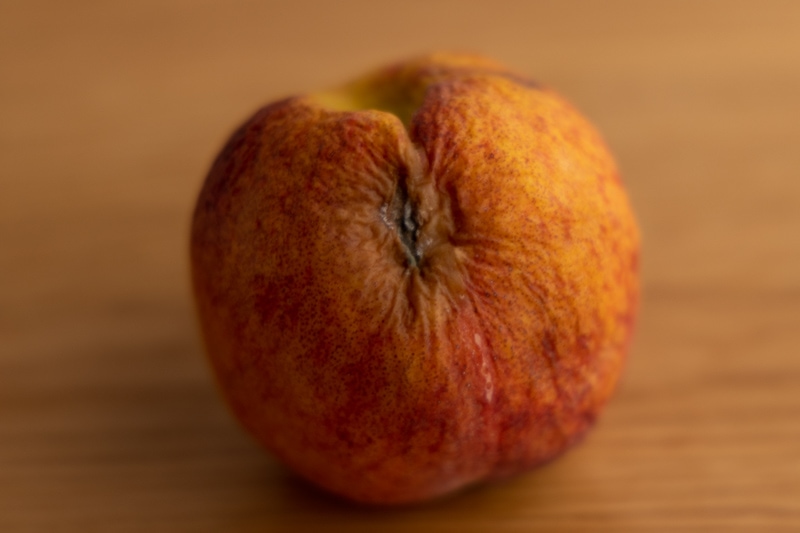
When it comes to soft nectarines, it’s up to you at which point you toss them. The way I go about it is that if I find the fruit gross after grabbing it, it has to go. But if it’s pretty soft but looks okay otherwise, I open it up.
If everything inside looks okay, or maybe there’s only a bit of translucency going on beneath the skin, I cut out the bad parts and use the rest.
What if the nectarines are too soft for snacking or using in a fruit salad but not bad enough to toss?
Use them in cooking. Hundreds of recipes use nectarines, and that’s the easiest way to use a bunch of nectarines nearing their storage time.
Some examples include nectarine muffins, various quick breads, nectarine jam, and many others. And in the case of muffins and quick breads, you don’t even need a dedicated recipe – just cut up the nectarines and add them to the batter right before cooking.
Nectarines Storage and Ripening Summary
Thank you for reading this short guide on nectarines. Let’s recap what we’ve covered:
- How to tell when a nectarine is ripe? A ripe nectarine gives slightly under gentle pressure. A nectarine at peak ripeness is slightly soft, but that’s it. If the whole fruit is super soft, it’s overripe; if it’s firm, it’s yet to ripen.
- How to ripen nectarines? Ripen nectarines on the counter at room temperature. If you want to speed up the process, place the fruits in a brown bag and perhaps add an apple or banana for some extra ethylene.
- How to store nectarines? Leave unripe nectarines at room temperature until ripe. After ripening, you can leave them on the counter for a day or so or refrigerate for up to 5 days.
- How long do they last? Nectarines take 1 to 3 days to ripen. Once ripe, they last 3 to 5 days refrigerated and up to 2 days on the counter. Nectarines at peak ripeness last longer than softish overripe ones.
Rotten Records: Share Your Snap!
Caught some food past its prime? Upload your photo to “Rotten Records” and help others spot the signs of spoilage. Every image makes our food community safer and more informed!

